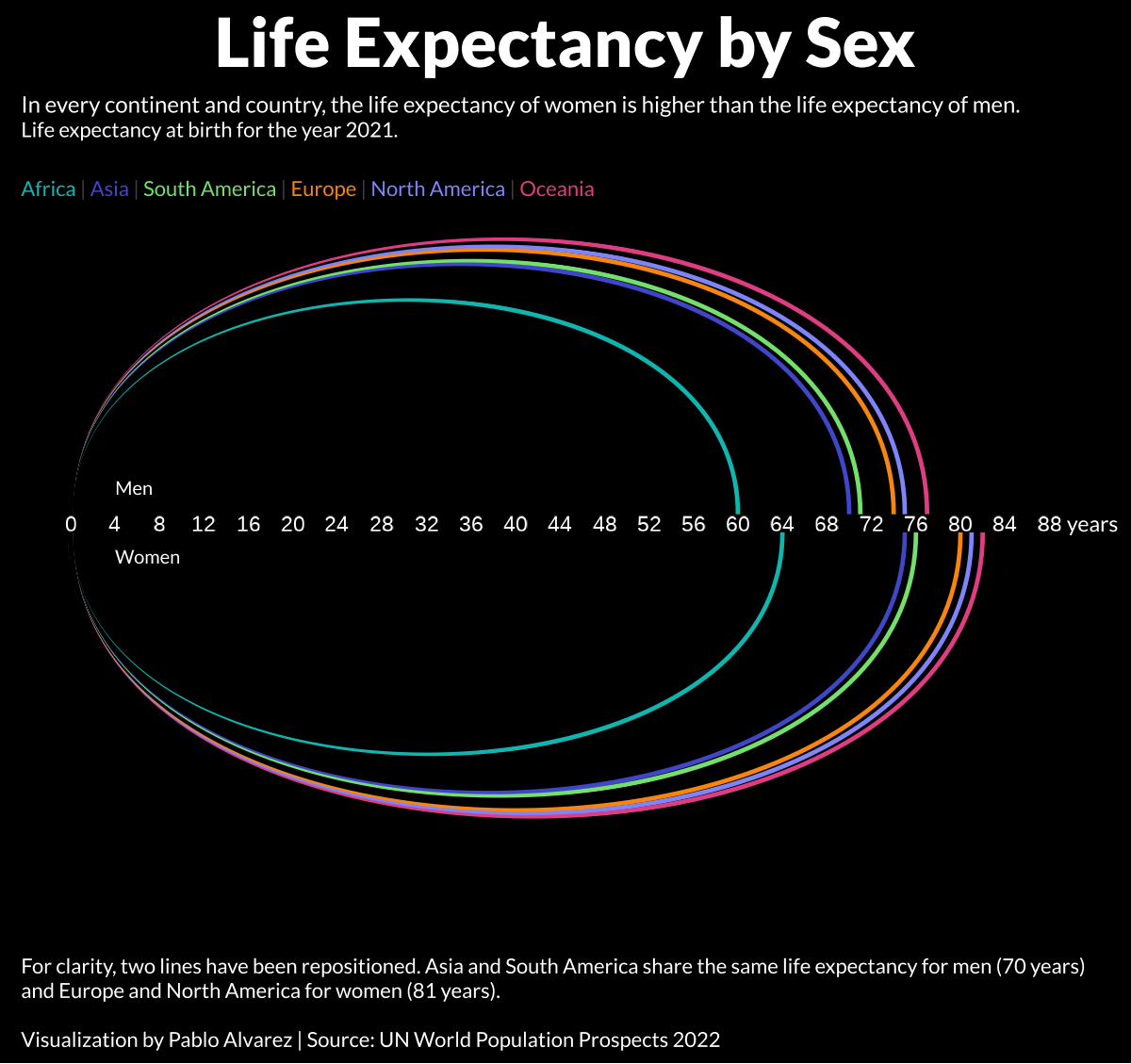Animated Chart: Global Life Expectancy (1950-2021)
At a glance, life expectancy has been increasing worldwide over the last 70 years. But when you break it down by region and by sex, a clear yet variable gap in life expectancy emerges.
Using data from Our World in Data, these graphics by Pablo Alvarez provide both a breakdown of average life expectancies worldwide, as well as a more granular view that looks at the life expectancy of men and women across different continents.
Life Expectancy, by Continent and Sex
In the 1800s, the average life expectancy at birth was just 40 years.
Over the last 200 years, average life expectancies have nearly doubled, largely thanks to improvements in healthcare, sanitation, and global medical practices.
However, increases in life spans have not been consistent across the sexes—around the world, women now live 5.4 years longer than men do on average. And in certain parts of the world, this gap is even wider.

For instance, in South America, the average life expectancy for women is seven years longer than it is for men.
Here is the continental breakdown, with data by continent for both male and females:
| Life Expectancy by Region (2021) | Life expectancy at birth, females (years) | Life expectancy at birth, males (years) |
|---|---|---|
| Africa | 64 | 60 |
| Asia | 75 | 70 |
| Europe | 81 | 74 |
| North America | 81 | 75 |
| Oceania | 82 | 77 |
| South America | 76 | 70 |
| Global Average | 74 | 68 |
What’s causing this discrepancy in life expectancy between men and women?
Theories to Explain the Gap
While scientists don’t know the exact reason for the gap in average life expectancy between sexes, research has put forward a few leading theories. They indicate that the gap is caused by a mix of biological and societal influences:
Biological Factors
According to Our World in Data, there are several genetic and hormonal differences between men and women that may impact longevity.
Because of higher estrogen levels and chromosomal differences, women tend to have more “subcutaneous fat” in their bodies, which is fat that’s carried directly under their skin.
In contrast, men tend to have more “visceral fat,” or fat that surrounds internal organs—which is linked to cardiovascular disease, making men more prone to health risks like heart attacks.
Societal Factors
There are also a number of societal factors that could be contributing to lower life expectancy levels for men.
According to Dr. Perminder Sachdev, a professor of neuropsychiatry who studied human longevity, men are “more likely to smoke, drink excessively, and be overweight.” Dr. Sachdev adds that men are also “less likely to seek medical help early, and, if diagnosed with a disease, they are more likely to be non-adherent to treatment.”
In addition to these aggravated health risks, research also indicates that men are more likely to die in car crashes and fights than women. Further, they tend to disproportionately work in dangerous professions, with men being 10 times more likely to be killed on the job than women.
What’s the biggest contributor of all these factors? It’s worth noting that none of these theories are mutually exclusive, meaning it’s likely a mixture of all of the above—however, the weighting of each factor is currently unknown.


